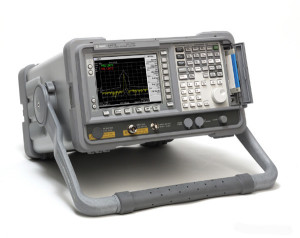Optical Spectrum Analyzers
An optical spectrum analyzer uses reflective and/or refractive techniques to separate out the wavelengths of light. An electro-optical detector is used to measure the intensity of the light, which is then normally displayed on a screen in a similar manner to a radio- or audio-frequency spectrum analyser.

The input to an optical spectrum analyzer may be simply via an aperture in the instrument’s case, an optical fiber or an optical connector to which a fiber-optic cable can be attached.
Shop For Optical Spectrum Analyzers
Different techniques exist for separating out the wavelengths. One method is to use a monochromator, for example a Czerny-Turner design, with an optical detector placed at the output slit. As the grating in the monochromator moves, bands of different frequencies (colors) are ‘seen’ by the detector, and the resulting signal can then be plotted on a display.
The frequency response of optical spectrum analyzers tends to be relatively limited, e.g. 1600 – 800 nm (near-infrared to red), depending on the intended purpose, although (somewhat) wider-bandwidth general purpose instruments are available.
By analyzing the spectra of electrical signals, dominant frequency, power, distortion, harmonics, bandwidth, and other spectral components of a signal can be observed that are not easily detectable in time domain waveforms. These parameters are useful in the characterization of electronic devices, such as wireless transmitters.
